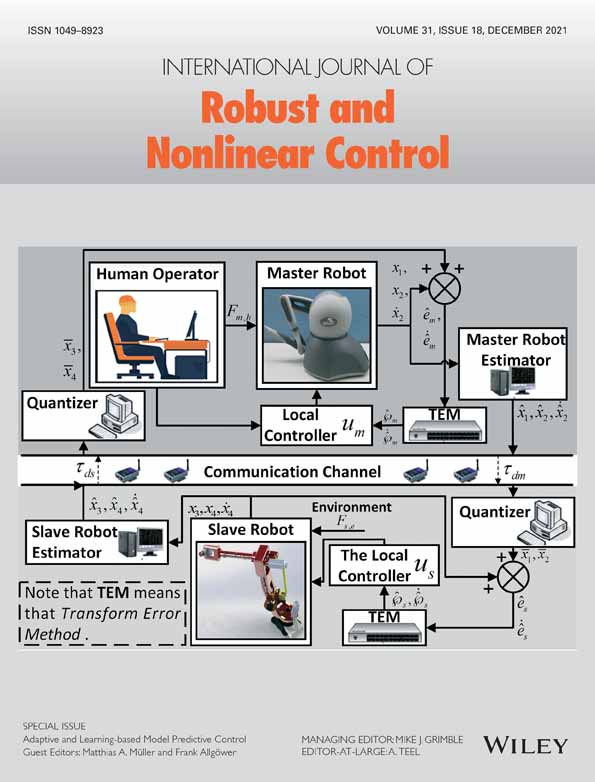Discrete-time impulsive and switched systems with delayed impulses: Delay-based criteria on input-to-state stability
Abstract
This article addresses input-to-state stability (ISS) for general discrete-time impulsive and switched delayed systems coupled with delayed impulses. In view of the multiple Lyapunov functionals and the subsequence method, some novel sufficient criteria pledging ISS are established. It is indicated that, the impulsive and switched delayed systems as an integral will be ISS if destabilizing impulses do not happen too frequently when the system flows are ISS with the impulse dynamics governing the delay-dependent impulses not being ISS. Oppositely, when the impulse dynamics are ISS with the system flows not being ISS, the delayed impulses are demanded to happen intensively enough to eliminate the destabilizing influences of the system dynamics so that the ISS can be realized for the whole system. Especially, the whole system is ISS for arbitrary impulse time series when the system flows and the impulse dynamics are both ISS. The results obtained in this article, when compared with the prior consequences on similar problems, can deal with a large class of discrete delayed systems as the criteria not only apply to the cases of smaller delays than the dwell time bound, but also suitable to larger. Moreover, the acquired dwell time bound is more relaxed than existing ones in the sense that the dwell time constraints are independent of delay bounds and an extra parameter. In order to prove the effectiveness of the theoretical results, two examples are expressed with numerical simulations, in which the Chua's circuit system with delay-dependent impulses is considered.
CONFLICT OF INTEREST
The authors declare no potential conflict of interest.
Open Research
DATA AVAILABILITY STATEMENT
Data sharing not applicable to this article as no datasets were generated or analyzed during the current study.




